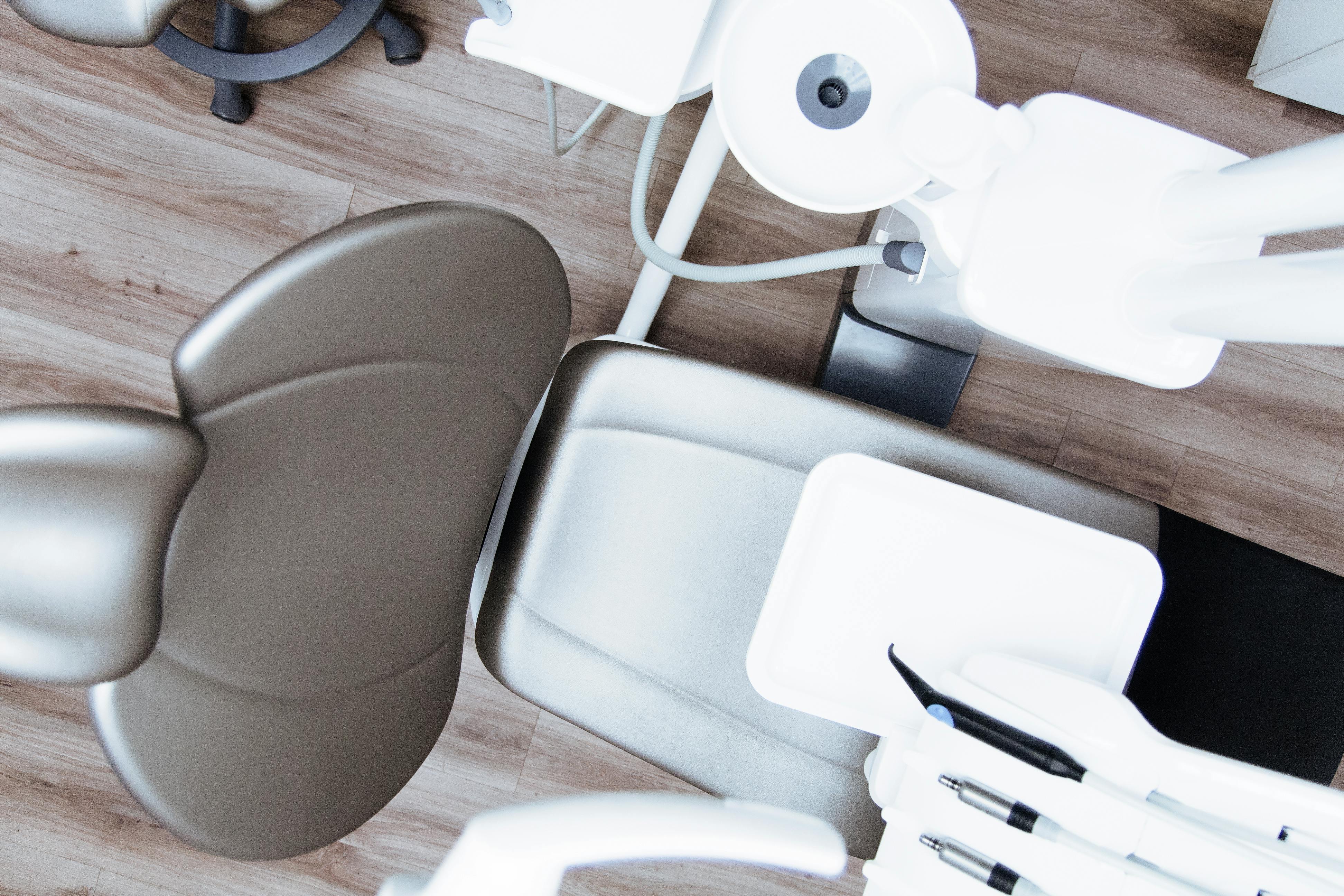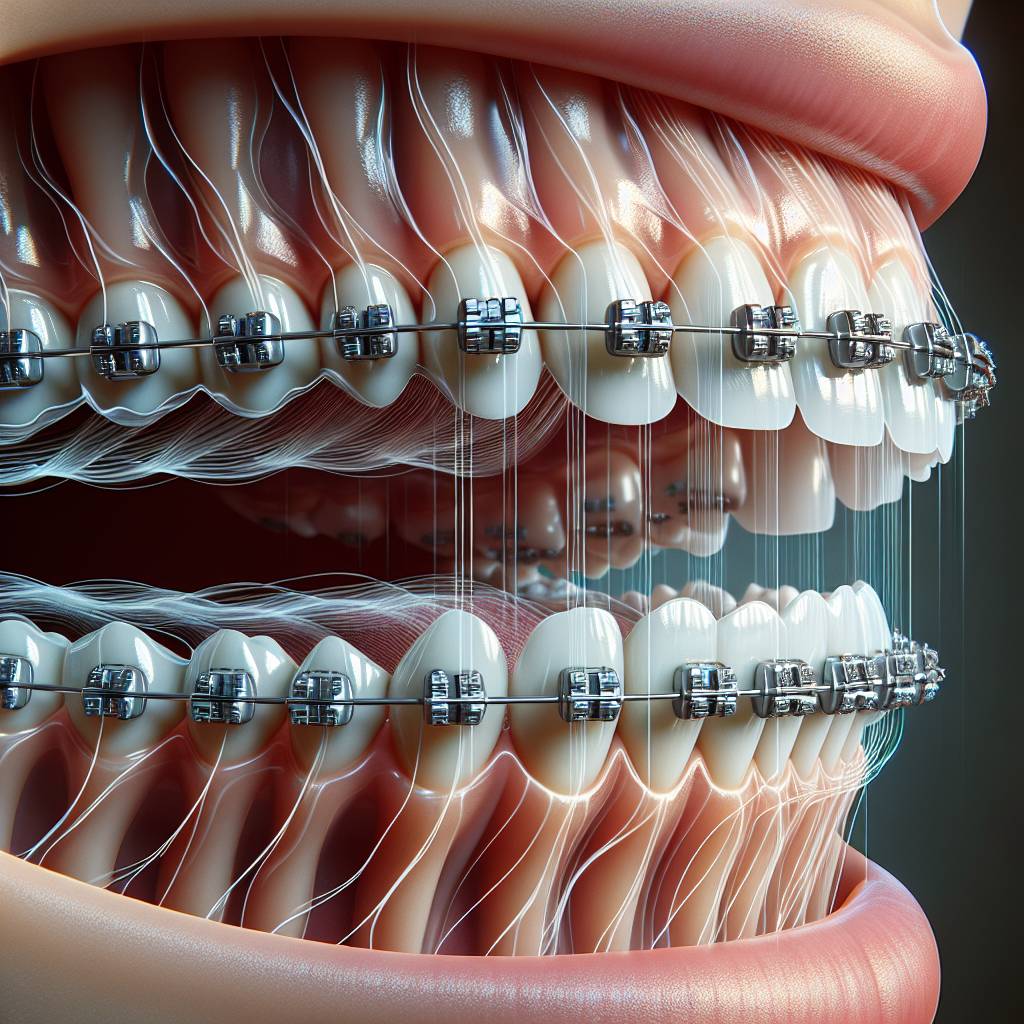Braces are a common orthodontic treatment used to straighten teeth and improve the overall alignment of the jaw. They are composed of metal or ceramic brackets that are bonded to the front of each tooth with an adhesive. The brackets are connected by a wire, which is held in place by small elastic bands called ligatures. The braces work by applying continuous pressure to the teeth, gradually shifting them into the desired position.Braces are orthodontic devices used to straighten teeth and improve the appearance of your smile. They consist of brackets that are bonded to your teeth, and arch wires that are held in place by elastic ties. Braces help to move your teeth into the correct position over time, giving you a straighter, healthier looking smile.
How Do Braces Straighten Teeth?
Braces are orthodontic appliances used to straighten teeth and help improve the overall alignment of the jaws. Braces work by applying pressure to your teeth, which eventually move them into the desired position. This pressure is applied gradually over time by a series of wires and brackets that are connected to each other. The brackets are attached to each individual tooth using a special dental adhesive, while the wires are threaded through the brackets and tightened periodically. As the wires are tightened, they slowly move the teeth into their correct positions. The process of straightening with braces can take several months or even years depending on the severity of your misalignment or bite.
In addition to applying pressure to move your teeth, braces can also be used to help close gaps between teeth or fix an overbite or underbite. This is done by placing different types of brackets on certain teeth and adjusting them as needed until they reach their desired position.
Braces not only straighten teeth, but they also help improve overall oral health by making it easier for patients to properly clean their teeth and maintain good oral hygiene habits. Additionally, braces can help reduce jaw pain caused by misaligned bites and prevent future issues from developing due to improper alignment.
Overall, braces are a highly effective method for straightening teeth and improving your overall dental health. With proper maintenance and care, most patients will have straighter smiles in no time!
What Are the Different Types of Braces?
Braces are an orthodontic treatment used to straighten teeth and correct misalignment. There are many types of braces available, each with its own unique set of advantages. Traditional metal braces are the most commonly used type of braces, and are often the least expensive option. These braces are composed of metal brackets that attach to each individual tooth and a small archwire that connects them together. The archwire is tightened periodically throughout treatment to move teeth into their desired positions.
Clear ceramic braces offer a more discreet alternative to traditional metal braces, as the brackets blend in more with the natural color of your teeth. Ceramic braces also have smaller brackets, making them less noticeable than metal braces. Lingual braces are a type of metal brace that attaches to the backside of your teeth instead of the front, making them virtually invisible when you smile.
For patients looking for a more convenient option, Invisalign is a great alternative to traditional braces. This system uses custom-made clear aligners that fit snugly over your teeth. The aligners are designed to gradually move teeth into their desired positions over time without using any wires or brackets. Invisalign also offers patients greater flexibility in terms of care since they can be removed for short periods throughout treatment for convenience and comfort.
What Is the Process for Getting Braces?
The process for getting braces typically begins with a consultation with an orthodontist. During this consultation, they will assess your individual needs and determine the type of braces that would be best for you. The orthodontist will also take X-rays and photographs of your teeth to get a better understanding of your dental health. They may also use plaster models of your teeth to create a customized treatment plan. Once the plan is established, the orthodontist will discuss the cost and timeline of treatment with you.
The next step is having the braces fitted to your teeth. This usually involves having metal brackets bonded to each tooth, then having a metal arch wire threaded through them. Your orthodontist may also attach rubber bands or other materials to the arch wire in order to help move teeth into their correct positions. You may also need to wear headgear or other appliances, depending on your individual needs.
Once the braces are fitted, you will need to visit the orthodontist regularly in order for them to adjust and monitor your progress. During these appointments, they will tighten or loosen the arch wire in order to move teeth into their desired positions. Your orthodontist may also give you instructions for taking care of your braces at home, such as using special oral hygiene tools or avoiding certain foods that can damage them.
After wearing braces for an extended period of time (typically between one and three years), you will need to have them removed by an orthodontist in order for them to firmly set your teeth in place. During this final appointment, they will remove all components of the braces and make sure that all adjustments are complete before taking off any hardware from your teeth. After that, you should be able to enjoy straight and healthy looking smile!
How Long Does It Take to Straighten Teeth with Braces?
Straightening teeth with braces can take anywhere from nine months to three years, depending on the severity of the misalignment and the type of braces being used. Traditional metal braces are the most common type of braces used in orthodontic treatment, and they typically take longer than other types of braces. The length of time it takes to straighten teeth with braces also depends on how closely the patient follows their orthodontist’s instructions and how often they visit for check-ups.
The severity of the misalignment is one of the main factors that determines how long it takes to straighten teeth with braces. If a patient has mild misalignment, then it may only take 12 to 18 months for them to achieve their desired results. However, if a patient has severe misalignment, then it may take up to three years or longer for them to get the results they want.
The type of braces a patient uses also affects how long it takes to straighten teeth with braces. Traditional metal braces are usually more effective than other types of braces but take longer because they require more frequent adjustments from an orthodontist. Clear or ceramic braces are becoming increasingly popular as they offer a more discreet look while providing similar results as traditional metal braces in less time. Invisalign and other clear aligner systems can provide similar results in even less time than traditional metal or ceramic braces but require greater commitment from the patient as they must wear their aligners for at least 22 hours per day.
Finally, how closely a patient follows their orthodontist’s instructions and how often they visit for check-ups will also affect how long it takes to straighten teeth with braces. It is important for patients to follow their treatment plan and attend all scheduled appointments so that their treatment progresses as quickly and efficiently as possible. By following their orthodontist’s instructions and regularly visiting them for check-ups, patients can ensure that their treatment goes according to plan and helps them achieve a beautiful smile in no time!

Are There Any Risks or Discomforts Associated with Wearing Braces?
Wearing braces can cause some discomfort, but this is usually temporary and manageable. Common side effects of wearing braces include mouth sores, caused by the brackets rubbing against the inside of your mouth, and irritated gums from poking wires. Other discomforts such as jaw pain, headaches, and difficulty eating can also occur.
In rare cases, wearing braces can lead to more serious complications such as permanent damage to the teeth or gums. To prevent this from happening, it is important to follow your orthodontist’s instructions for proper care and maintenance of your braces. Regularly brushing and flossing around the braces is essential for preventing cavities and gum disease. In addition, it is important to avoid hard or chewy foods that could damage the brackets or wires.
Although there are potential risks associated with wearing braces, most people find that following their orthodontist’s instructions keeps them safe and comfortable throughout their treatment. With proper care and maintenance of your braces, you should experience minimal discomfort while achieving a beautiful smile.
Foods to Avoid when Wearing Braces
Wearing braces can be a difficult and uncomfortable experience, but avoiding certain foods can help make the process a bit easier. Certain foods are especially challenging for braces, so it’s important to know what to avoid while wearing them. While it’s possible to enjoy some of these foods in moderation, other items should be avoided completely. Here are some of the most common food items to avoid while wearing braces:
Hard or crunchy snacks: Hard snacks, such as chips, popcorn, and pretzels should be avoided as they can damage the wires and brackets of your braces. These types of snacks can also get stuck in the brackets and cause discomfort.
Sticky snacks: Sticky Sweet treats such as gum, caramels, taffy and hard candy should also be avoided while wearing braces. These sticky snacks can get stuck in the brackets and wires and are very difficult to remove without damaging the braces.
Chewing on ice: Chewing on ice is never a good idea as it can damage your teeth and your braces. The cold temperature of ice can also cause sensitivity and discomfort for those with braces.
Tough meats: Tough meats such as steak or ribs can be difficult to chew with braces because they require more chewing than softer meats like chicken or fish. It’s best to opt for softer meat while wearing braces or cut tough meats into smaller pieces before eating them.
Sugary drinks: Sugary drinks such as soda, juice, sports drinks, and energy drinks should be avoided while wearing braces as they can cause decay around the brackets and wires of your teeth. Opting for water instead is a much healthier choice when wearing braces.
It’s important to remember that avoiding certain foods while wearing braces is essential for keeping them clean and preventing damage or discomfort. By following these tips you can ensure that your orthodontic treatment goes smoothly!
Brushing and Flossing
Taking care of your teeth and braces is important for your oral health. Brushing your teeth at least twice a day is important to maintain good dental hygiene and prevent cavities. It’s important to brush all surfaces of the teeth, including the brackets, wires, and bands of the braces. Flossing should also be done at least once a day to remove food particles and plaque from between the teeth. It may be difficult to floss with braces, but there are special flossers available that can help make the job easier.
Mouthwash
Rinsing with an antibacterial mouthwash can help reduce plaque buildup on the braces and around the gums. Rinsing with mouthwash is an easy way to keep your breath fresh and reduce bacteria in your mouth. Make sure you rinse with water after using mouthwash to get rid of any leftover residue.
Avoid Certain Foods
Certain foods can cause damage to your braces or get stuck in them, so it’s important to avoid them while wearing braces. Hard or sticky foods such as candy, gum, popcorn, nuts, corn on the cob, hard pretzels and ice should be avoided as they can damage the braces or get stuck in them. Additionally, sugary snacks such as candy or cookies should be avoided as they can increase plaque buildup on your teeth.
Regular Visits to Your Orthodontist
It is also important to make regular visits to your orthodontist for checkups and adjustments. During these visits, your orthodontist will check for any issues with the braces or other dental problems that may have arisen since the last visit. They will also adjust or tighten the wires if needed so that they remain in place properly.
By following these tips for taking care of your teeth and braces you can ensure that you maintain good oral hygiene while wearing them. Regular brushing and flossing combined with avoiding certain foods and making regular visits to your orthodontist are key for keeping your teeth healthy during this time.

Conclusion
Braces are an effective way to straighten teeth and improve overall oral health. They use gentle pressure to move teeth over time into the correct position. Braces come in a variety of materials, including metal, ceramic, and plastic, and they can be used to treat a wide range of orthodontic issues. Orthodontists may also recommend other treatments in combination with braces to achieve the desired results. Orthodontic treatment with braces can take anywhere from six months to two years depending on the severity of the problem and the patient’s age. With regular visits to the orthodontist for adjustments, however, it is possible to get your teeth looking straight and healthy in no time.
No matter how severe your orthodontic issue may be, you can rest assured that braces will help you get the smile you have always wanted!

